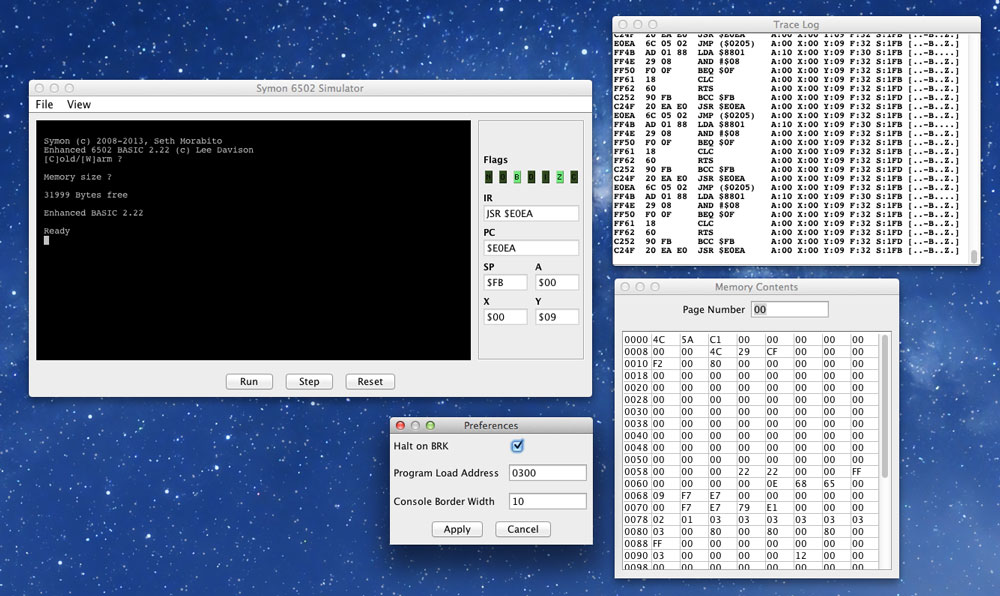
A little while ago I wrote the 6502 simulator pictured above, Symon, and released it as open source software. I wrote it because I was developing a small 6502 computer, and wanted a simulator that matched the hardware’s memory map. I’ve always been interested in learning more about simulation, so it was a natural project for me to gravitate to. I’ve enjoyed working on it tremendously, but there is only one problem: I wrote it in Java.
Java is undergoing what seems to me to be a crisis of public opinion. The news is full of stories about another critical vulnerability, and vendors are rushing to disable Java in browsers by default. Users are being told to turn off Java wherever unless they really need it.
So why did I choose Java in the first place? For several reasons. First, I started this project a couple of years ago. When I first set out to write the emulator in 2008, Java was still owned by Sun Microsystems, still enjoyed widespread popularity, and wasn’t yet considered as much of a security risk. Second, Java was a language that I knew extremely well, having worked on many Java projects in the past. I started writing Java in 1997, and it was the primary language used in my day job straight through 2007, so it was quite natural for me to fall back on it. Third, and maybe most importantly, I very much wanted Symon to be fully cross-platform. Although I use a Mac with OS X as my main system, I also have a Linux laptop and a Windows 7 PC that I spend quite a bit of time on. It was important to me that I’d be able to use Symon on all three platforms. Java gave me that feature for free.
But with the latest goings-on in the world of Java on the desktop, I have to wonder, will Java even have a viable consumer desktop runtime in the near future? Sure, it has tremendous support on mobile thanks to Android, and its position in the server market is assured after a decade and a half of Java as a web platform, but it never gained the kind of wide-spread support on the desktop that it has on the server. With more bad news coming out and more end users disabling Java how will people run Symon?
I feel like I’m left with a couple of options.
- Ignore the problems. Just keep updating the Java Symon code, and let things fall where they may.
- Give up multi-platform. Port Symon to a native OS X Cocoa version, and accept the fact that I won’t be able to run the code on Windows or Linux.
- Find a new multi-platform runtime. But which one? Mono, an ecosystem that I know nothing about?
None of these is ideal. The easiest for me to do, of course, is the first, and this is likely what I will do for a while at least. But if my instincts are right, and Java has a very limited lifetime on the desktop, I’ll have to pick one of the other two not too long from now.
Comments